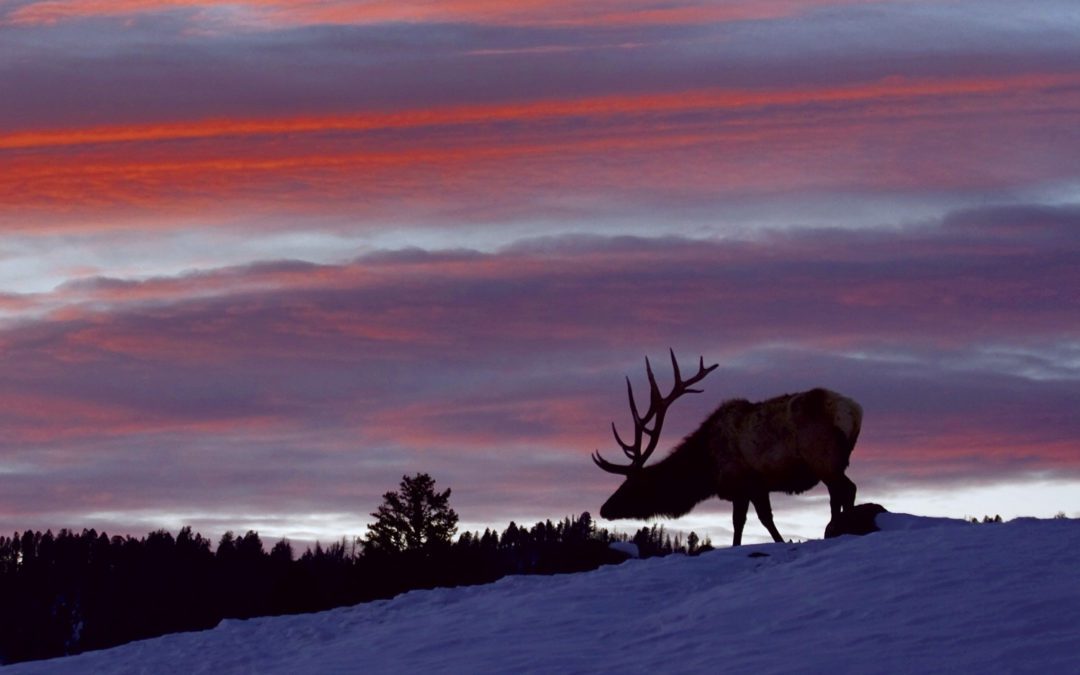An annual winter aerial survey conducted by Montana Fish, Wildlife and Parks and Yellowstone National Park biologists counted 7,579 elk over two days in January, up a whopping 42 percent from last winter’s 5,349 elk.
The sizeable increase over last year is likely due to the inconsistency in the ability to see animals from the air, said Karen Loveless, an FWP biologist based in Livingston who flies part of the survey area. Studies have shown the accuracy of aerial counts can vary from 65 to 90 percent, depending on conditions.
“What we do know is the population trend is increasing,” she said. “So that’s great. The goal was to slow the rate of decline, so since 2013 the decline has stabilized and populations have increased. Now the challenge is, we’re over objective.”
The Northern Range elk herd has been closely monitored because it has been the main source of food for Yellowstone National Park’s wolves. The herd had swelled to more than 19,000 by 1994, but when wolves were reintroduced in 1995 elk numbers began to decline as wolf populations grew on a steady diet of elk meat.
More elk for wolves meant fewer for hunters and hunting outfitters, some of whom have been loud critics of the wolf reintroduction and FWP’s resulting elk management decisions. In years past the agency reduced cow elk hunting permits to help rebuild the herd and then cropped the bull elk hunt.
In 2016 the Fish and Wildlife Commission agreed to shorten the elk hunting season in the district north of Yellowstone, Hunting District 313, by two weeks in order to protect migrating elk. For the first time this fall, FWP even instituted a temporary closure during the fall hunting season to protect migrating elk that were caught in a hail of gunfire as they left Yellowstone near Gardiner.
Now FWP is a victim of its own successful management policies. With elk numbers up, Loveless said the agency has recommended increasing the cow elk harvest in the southern portion of Hunting District 317 — the northeast side of Paradise Valley — and the northern edge of HD 316 to push elk away from private lands and onto the adjoining national forest and Dome Mountain Wildlife Management Area.
The recommendation would even allow a limited amount of antlerless licenses extending into February. “Increasing harvest pressure and continuing it into the postseason may help if we can discourage them from getting into those (cattle operations),” Loveless said.
Elk are known carriers of brucellosis, a disease that can cause cattle to abort. FWP has been working to keep elk and cattle separated, especially during the spring elk calving season since birthing material carries the brucella bacteria.
“It’s nice to see more elk wintering in Yellowstone,” Loveless said. “They haven’t been utilizing it as much as they used to. People like to see them there.”
Increased elk migration could be due to a number of factors, including: more bison on the Northern Range so more competition for food, avoidance of a predator-rich environment; a decrease in hunter pressure near the northern border that in the past may have turned elk back into the park.
“Looking at these numbers it would be hard to say wolves are having an impact,” Loveless said. “Whatever’s going on with predators, we seem to be able to sustain it.”
The winter survey looks at population trends while a survey in March will examine the herd’s composition, such as calf recruitment and bull to cow ratios.
This year’s elk count is the highest in 13 years. In 2005, 9,545 elk were counted. The long-term average since elk counts began in 1976 is 10,634 elk. The herd counts bottomed out in 2014 at about 2,000 elk.
Brett French – Casper Star Tribune

